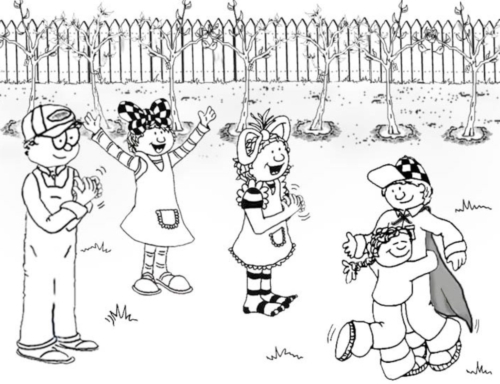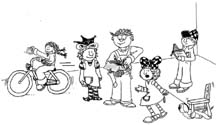-
 Peace and kindness are two powerful "fruit" of the Holy Spirit. Tina gives Harvey an "Action Hero" cape, and calls him "Spirit Boy." Harvey's act of kindness came after Pastor Rufus told them the story of Paul and Silas in Acts 16: 23-34. Harvey was inspired to show his love to Tina in a powerful way.
Peace and kindness are two powerful "fruit" of the Holy Spirit. Tina gives Harvey an "Action Hero" cape, and calls him "Spirit Boy." Harvey's act of kindness came after Pastor Rufus told them the story of Paul and Silas in Acts 16: 23-34. Harvey was inspired to show his love to Tina in a powerful way. -
 Problems with brothers and sisters happens often between Harvey and Tina. Pastor Rufus challenges them to ask God to help them get the fire of anger with their brothers and sisters "WET" by doing good when they have been treated badly, and setting a good example of what it means to have a new life in Christ.
Problems with brothers and sisters happens often between Harvey and Tina. Pastor Rufus challenges them to ask God to help them get the fire of anger with their brothers and sisters "WET" by doing good when they have been treated badly, and setting a good example of what it means to have a new life in Christ. -
 This Christian Mime Theater skit paints a vivid picture of those who reject God's grace, and their misery in trying to make the Christian journey, and those who accept the help of His grace, and walk in his strength. This makes an excellent sermon illustration, encouraging believers to humble themselves before God.
This Christian Mime Theater skit paints a vivid picture of those who reject God's grace, and their misery in trying to make the Christian journey, and those who accept the help of His grace, and walk in his strength. This makes an excellent sermon illustration, encouraging believers to humble themselves before God.









